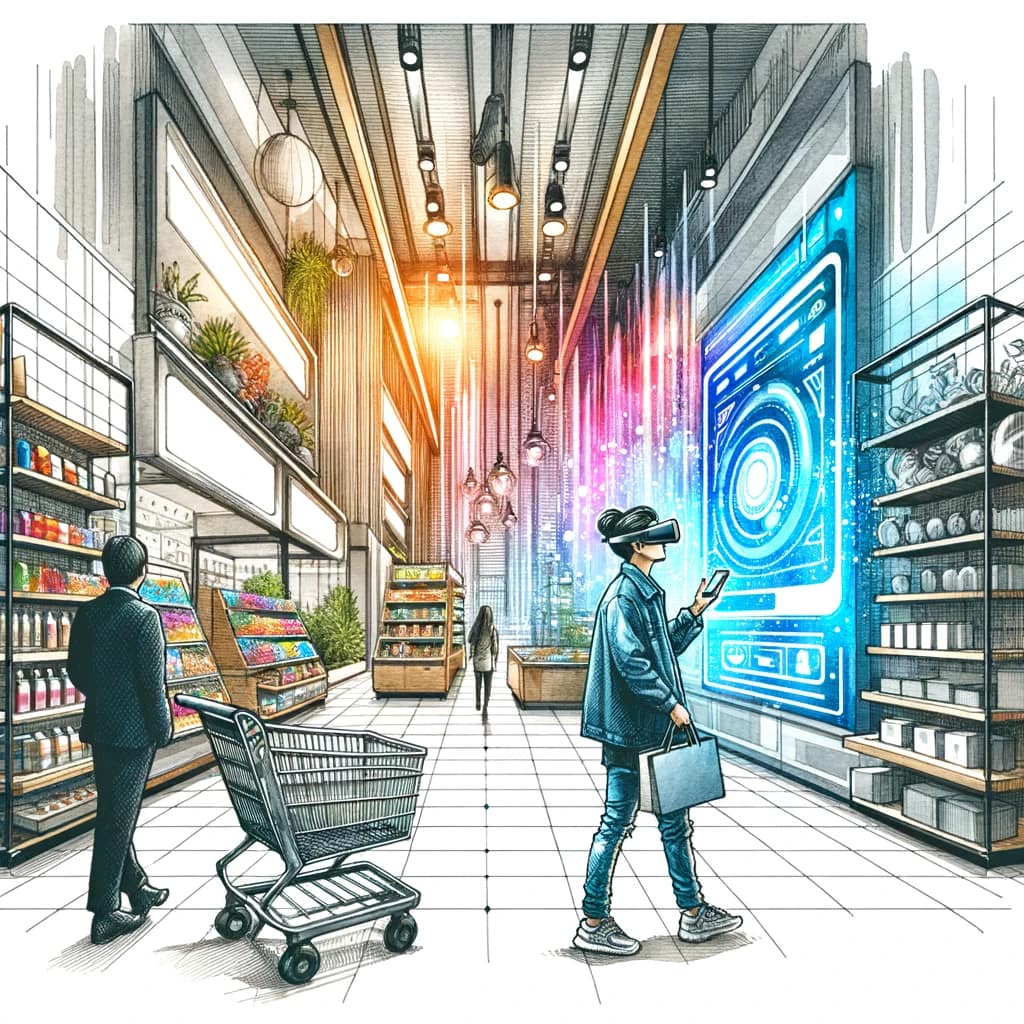Industry: Retail
Introduction
Digital transformation in retail is crucial for enhancing customer experience and increasing sales. Advanced digital technologies like point-of-sale data analytics and predictive analytics help manage inventory effectively. Retailers use machine learning models to analyze customer demographics and behavior, leading to personalized marketing campaigns. This phased approach ensures continuous improvement and adaptation, driving growth in the competitive retail landscape.
Sample Problem: Enhancing Customer Experience and Increasing Sales through Digital Transformation
Business Problem/Opportunity: Enhance customer experience and boost sales using advanced digital technologies.
Data: Retailers can leverage various data sources, including point-of-sale (POS) data, customer demographics, online browsing and purchasing behavior, social media interactions, and loyalty program data. Data from in-store sensors (e.g., foot traffic, heat maps) and external sources such as market trends and competitor analysis can be integrated. The quality and accuracy of this data are critical for deriving meaningful insights. Advanced analytics and machine learning models can be applied to segment customers, predict purchasing patterns, personalize marketing campaigns, and optimize inventory management, ultimately driving improved customer satisfaction and increased sales.
Technology: To enhance customer experience and boost sales, retailers can implement technologies such as artificial intelligence (AI), machine learning (ML), Internet of Things (IoT), and augmented reality (AR). AI and ML can power recommendation engines for personalized shopping experiences, predictive analytics for inventory optimization, and chatbots for improved customer service. IoT devices can track inventory in real time and monitor in-store customer behavior. AR can create immersive shopping experiences like virtual try-ons and interactive store displays. Integrating these technologies can transform the shopping experience, making it more engaging and efficient.
ROI and Risk: The ROI from these digital initiatives can be substantial. Enhanced customer experience leads to higher customer satisfaction and loyalty, increased foot traffic, and higher conversion rates. Personalized marketing can improve campaign effectiveness, driving more sales. Real-time inventory management reduces stockouts and overstock situations, optimizing the supply chain and reducing costs. However, these initiatives come with risks. Data privacy and security are paramount, and robust measures are required to comply with regulations such as GDPR. Implementing advanced technologies involves significant upfront investment in infrastructure, software, and training. There is also the risk of technology adoption challenges among employees and customers. Mitigating these risks involves comprehensive planning, clear communication, and ongoing training and support. Regular monitoring and auditing of AI algorithms are essential to ensure they function as intended and not introduce biases. Despite these challenges, the long-term benefits, including competitive advantage and operational efficiencies, can justify the investment.
Execution and Organization: Execution involves a phased approach, starting with pilot projects to test and refine the new technologies. Cross-functional teams, including data scientists, software engineers, and marketing specialists, will collaborate on developing and implementing AI and ML models. Agile methodologies will ensure iterative development and continuous improvement based on user feedback. Retailers need to foster a culture of innovation and data-driven decision-making. Training programs for employees on new technologies and data privacy practices are essential. Partnerships with technology providers and research institutions can bring in valuable insights and expertise. A dedicated project management office (PMO) can oversee the transformation initiatives, ensuring alignment with business goals and timely delivery. Change management strategies are crucial to handle resistance. Clear communication and stakeholder engagement strategies must be in place, with regular updates and success stories shared across the organization to build momentum and support. Addressing resistance involves involving employees in the transformation journey, highlighting the benefits, and providing necessary support and resources.
Notes on Execution: For successful implementation, focus on user-centric design, data privacy, and iterative development.
Detailed Execution Plan
- Phase 1: Planning and Assessment
- Objective: Identify critical areas for improvement and define project scope.
- Activities:
- Conduct a detailed analysis of current customer experience and sales processes.
- Identify data sources and evaluate data quality.
- Define key performance indicators (KPIs) and success metrics.
- Timeline: 1-2 months
- Resources: Project manager, data analysts, business analysts
- Phase 2: Pilot Projects
- Objective: Test and refine new technologies in a controlled environment.
- Activities:
- Develop AI-powered recommendation engines and chatbots.
- Implement IoT devices for real-time inventory tracking.
- Conduct small-scale pilot projects in select stores.
- Collect and analyze feedback to refine models and processes.
- Timeline: 3-4 months
- Resources: Data scientists, software engineers, user experience designers
- Phase 3: Full-Scale Implementation
- Objective: Deploy refined technologies across the retail chain.
- Activities:
- Scale up AI and ML models to handle the full customer base.
- Integrate AR for immersive shopping experiences.
- Ensure data privacy and compliance with regulations.
- Monitor performance and make iterative improvements.
- Timeline: 6-9 months
- Resources: Cross-functional teams, IT support, compliance officers
- Phase 4: Monitoring and Optimization
- Objective: Ensure continuous improvement and adaptation to customer needs.
- Activities:
- Regularly review and update AI models and algorithms.
- Conduct customer satisfaction surveys and gather continuous feedback.
- Optimize processes based on performance data and user feedback.
- Ensure ongoing training and support for employees.
- Timeline: Ongoing
- Resources: Continuous improvement team, user support team, training specialists
Conclusion
This sample execution plan provides a structured approach to enhancing customer experience and increasing sales in the retail industry. By leveraging advanced technologies and focusing on data-driven decision-making, retailers can significantly improve customer satisfaction, engagement, and overall business performance.
For a custom Digital Transformation, please get in touch with us

